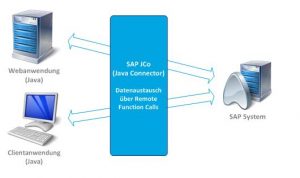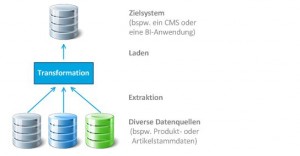Efficient data exchange of J2EE projects with the SAP world
Modern corporate IT systems are based on complex data source and conversion processes that can only be successful with careful planning and development methods. Data often has to be exchanged and processed between different systems within a company. Here, for example, classic J2EE applications interact with SAP systems.
doubleSlash uses technologies such as the SAP Java Connector(SAP JCo) and ETL (a process for extracting, transforming and loading data) for efficient data exchange in such projects.
The SAP Java Connector is a middleware component that enables the development of SAP-compatible components and applications in Java. SAP JCo supports communication with the SAP server in both directions: inbound (Java calls ABAP) and outbound calls (ABAP calls Java).
The SAP JCo can be used with both desktop and (web) server applications.
The following integration scenarios are available for the SAP Java Connector:
- in the SAP Business Connector for communication with external Java applications
- in the application server for coupling the integrated Java EE server with the ABAP environment.
In addition, the SAP JCo can be used as a standalone component, e.g. to realize communication with the SAP system for individual online (web) applications.
Due to growth and, for example, company mergers, there are countless systems that do not easily interact with each other. For example, production data from SAP systems must be integrated into sales IT systems.
In order to get different systems to work together productively, interfaces must be defined and created between them. ETL is used for data integration. The ETL process is used by doubleSlash, for example, to transfer certain data from production-related SAP environments to sales-related systems (Java server applications) and to enrich the production data with sales-specific information such as marketing texts, images and prices. The ETL process includes the following steps:
- Extraction of data from productive applications and databases(ERP, CRM, RDBMS, files, etc.).
- Transformation of the data to obtain a uniform view of the source systems, perform calculations and data cleansing, enrich with external lookup information and finally transfer to the corresponding target format.
- Loading the corresponding data into different applications.
The generation time of individual ETL processes varies from individual batch executions (once a week or a month, often daily) to near-real-time updates (hourly, every few minutes, etc.).
With ETL solutions, companies can access and integrate data in practically any system, regardless of format, and then make this data available company-wide in the shortest possible time.
Conclusion:
By using the SAP Java Connector or ETL technologies, J2EE applications can exchange data with SAP systems quickly and reliably in real time or on demand.



